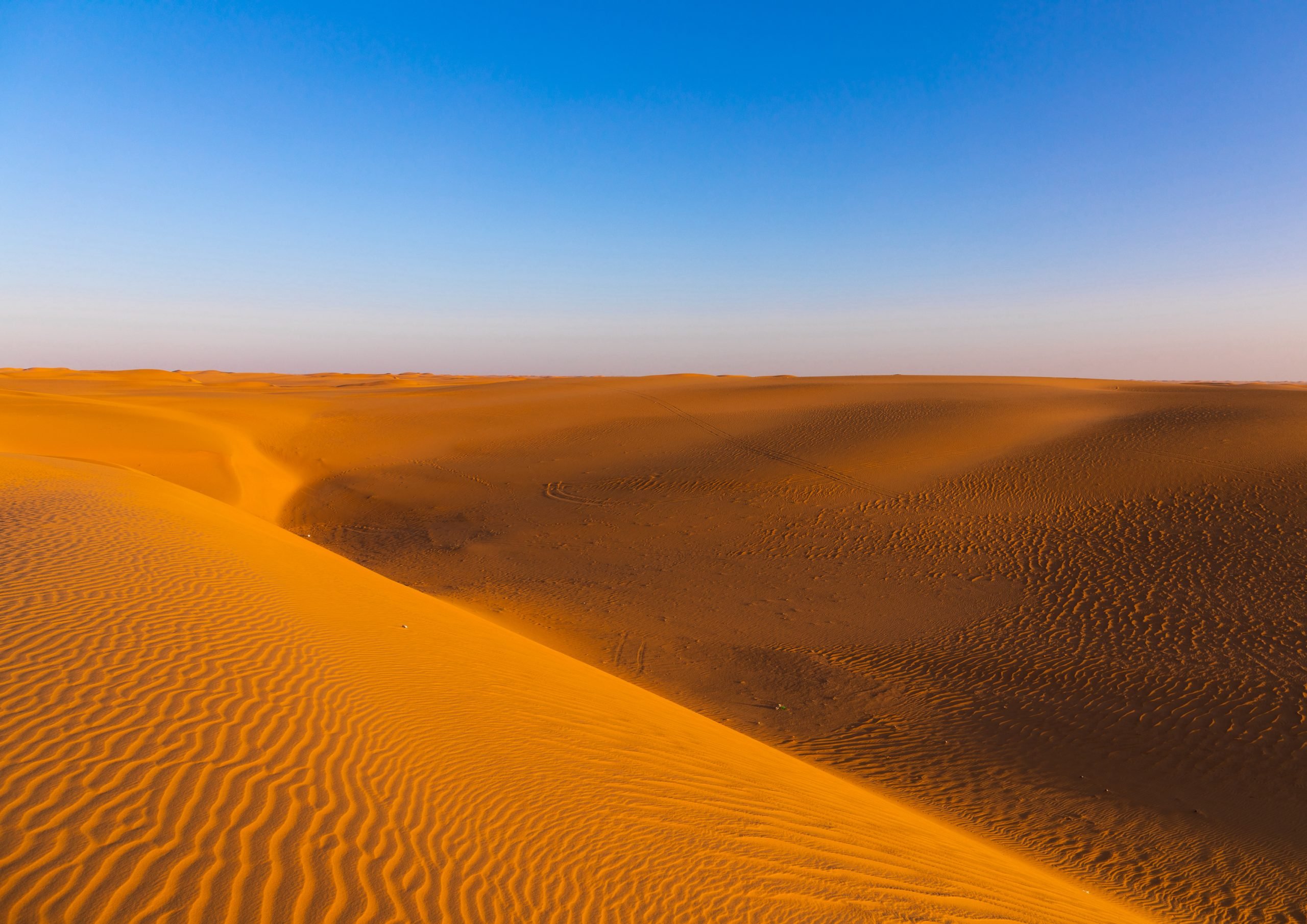
It’s not just for ChatGPT. Archaeologists have increasingly been finding new ways to deploy artificial intelligence in their search for buried truths—especially in terrain inhospitable to human exploration.
Now, a team of researchers at Khalifa University in Abu Dhabi has developed a machine-learning algorithm to help them trawl vast tracts of the Rub al-Khali, or ‘Empty Quarter’— a desert spanning 250,000 square miles on the Arabian Peninsula. The desert is home to the site of Saruq Al-Hadid, which holds evidence of 5,000 years of human activity. Leveraging data from this site, the team trained their algorithm to detect other potential areas for excavation nearby.
Traditional ground surveys are difficult and costly to conduct in the desert, while sandstorms and dune patterns have proved stubborn obstacles when interpreting satellite imagery. The algorithm is able to analyze images obtained using synthetic aperture radar (SAR), a powerful radar system capable of penetrating sand and vegetation, allowing researchers to see hidden structures beneath the surface.
Courtesy Khalifa University/Benromdhane et al. 2023.
The archaeologists used satellite-borne SAR, which is able to cover a wider area than is possible from the ground. With the financial support of Dubai Culture, the government body that manages Saruq Al-Hadid, the team was also able to conduct a ground survey using radar to replicate the results from the satellite. Using machine learning and deep learning techniques, the team has been able to create an algorithm capable of automated feature detection in the landscape, precise to within 50cm and able to produce 3D models of the expected structure.
“A major problem in remote sensing studies of arid and semi-arid environments such as the United Arab Emirates (UAE) is the deterioration of the image content by dust particles or cloud cover,” the researchers wrote in a paper published in Geosciences last June—a difficulty which SAR, rarely available to archaeologists because of its cost and complexity, has been able to circumvent. “To the best of the authors’ knowledge,” they add, “the current study is the first to use advanced image processing and machine learning techniques for the detection, prediction, and guidance of archaeology within the area of interest and the Rub’ Al-Khali desert.”
Courtesy Khalifa University/Benromdhane et al. 2023.
If successful, the project will broaden the applications of A.I. in the field of archaeology. The application of A.I. in archaeology is not confined to the Arabian Peninsula. For example, A.I. was instrumental in discovering four new Nazca petroglyphs in Peru, showcasing its global potential in archaeological exploration. Artnet News reported on the findings by researchers at Japan’s Yamagata University in 2023. These researchers suggested that A.I. could identify new petroglyph candidates 21 times faster than the naked eye.
Some experts have urged caution against “over-reliance” on the technology, however. Hugh Thomas, an archaeology lecturer at the University of Sydney, told CNN that there remains nothing better than a “trained archaeological eye” to detect sites. “The way that I would like to use this kind of technology is on areas that perhaps have either no or a very low probability of archaeological sites, therefore allowing researchers to focus more on other areas where we expect there to be more found,” he said.
Dubai Culture intends next month to begin excavations of the areas of interest identified by the algorithm at Saruq Al-Hadid. Only around 10 percent of the site, which covers an area of 2.3 square miles, has been uncovered. If the predictions of A.I. are accurate, Dubai Culture has explained that it will continue to use the technology. Diana Francis, one of the lead researchers on the project, told CNN that “The idea is to export (the technology) to other areas, especially Saudi Arabia, Egypt, maybe the deserts in Africa as well.”